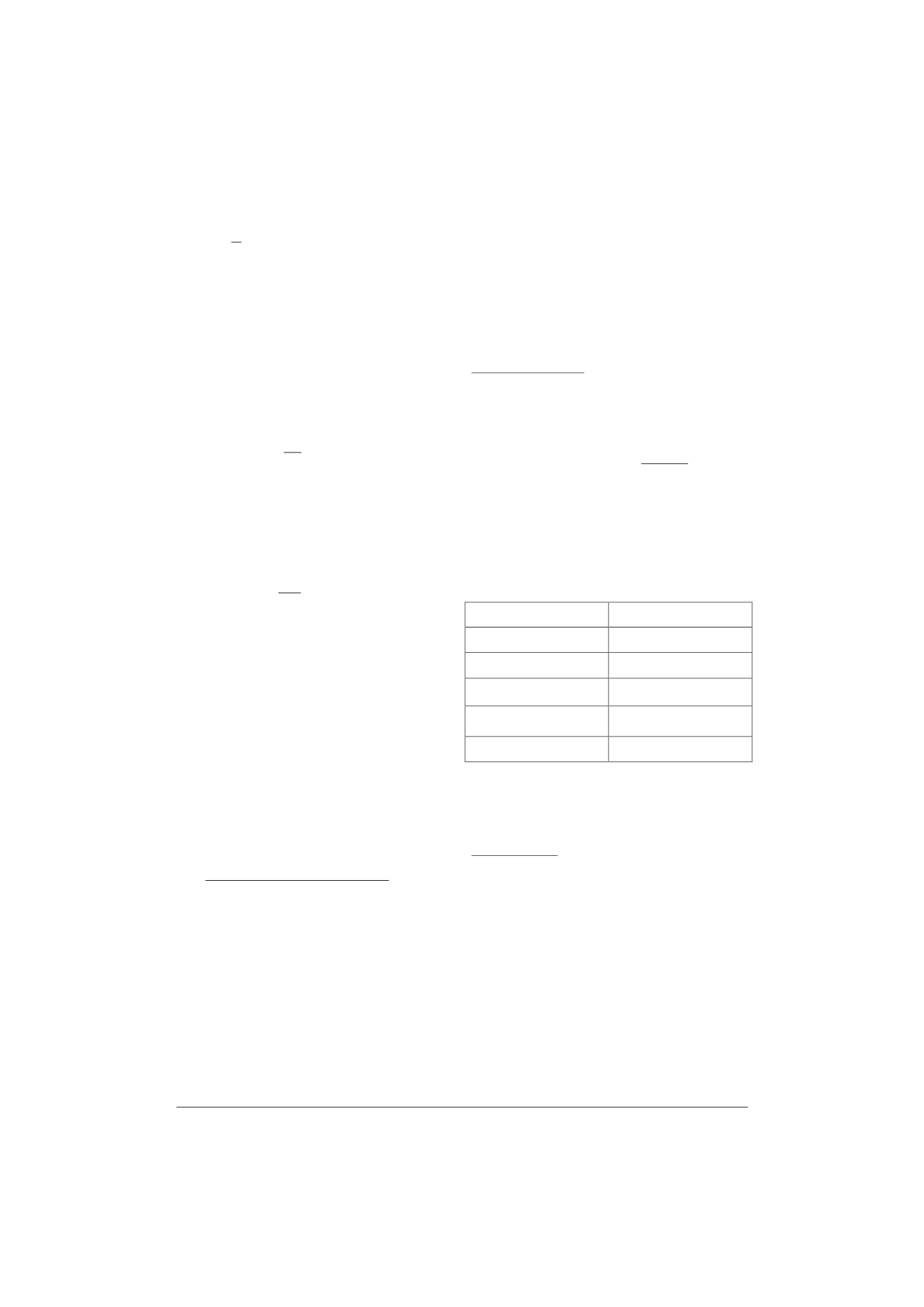
2011 International Conference on Alternative Energy in Developing Countries and Emerging Economies
- 162 -
1/2
N
1i
2
piX eiX
N
1
RMSE
»¼
º
«¬
ª
¦
(2)
(b) Determination of apparent density (ρ)
Apparent density of the GABA Sungyod rice was
measured within the initial moisture content ranges of 16
to 50% dry-basis. Each grain sample was placed fully in a
50 ml of beaker, the mass of samples were weighed by an
electronic balance with an accuracy of ±0.01 grams. The
measurements were repeated five times for each moisture
content level to calculate an average value. Then the
apparent density is calculated by dividing mass with bulk
volume and the Eq. (3) was determined according to the
following expression:
bV
m
ρ
(3)
(c) Percentage of void fraction (%ε)
The void fraction of sample is normally defined as the
fraction of the space in its bulk volume [6] and the
percentage of void fraction of GABA Sungyod rice was
evaluated as follows in Eq. (4).
0
10
bV
oilV
%
ε
u
(4)
(d) Specific heat capacity (C
p
)
The specific heat capacity of the GABA Sungyod rice
was measured at initial moisture content ranges of 20 to
50% dry-basis. Fifty grams of GABA Sungyod rice was
placed into a calorimeter block sealed with an insulated
sheet. Forty grams of hot distilled water (65
q
C) was
added into the calorimeter and mixed thoroughly.
Equilibrium temperature was then recorded. Experiments
with both samples and an empty referenced cell were
carried out. The latter was in order to obtain a baseline
value that would be subtracted from the experimental
sample measurements. Five repetitions for each sample
were carried out at the same conditions. Specific heat
capacity of GABA Sungyod rice was determined
according to the following in Eq. (5).
c c eq ci
w w eq wi
p
p eq pi
m c T -T +m c T -T
c
m T -T
ª
º
¬
¼
(5)
(e) Thin-layer drying modeling and effective diffusion
coefficient
To study the drying kinetic of GABA Sungyod rice
with initial moisture content ranging of 47 to 51 % dry-
basis was thin-layer dried by comparisons air
impingement and infrared (IR) radiation of 1000 W. The
experiments were carried out at impingement air drying
temperatures of 60 to 100
q
C with inlet air velocity fixed
at 7.3±0.2 m/s. The drying air temperature was controlled
by a PID controller with an accuracy of ±1
q
C. The inlet,
outlet the sample was continuously weighed during
drying time and the experiment is stop when the final
moisture content value reached to 14-16% dry-basis
which is safe value of dried food material for prolong
shelf life. Thin-layer drying models that describe the
drying phenomenon of these materials mainly fall into
three categories namely, theoretical, semi-theoretical and
empirical [11].
Empirical drying model
To calculate the moisture contents of the GABA rice
during the thin-layer drying experiments was calculated
from the Eq. (6) as below:
eq
M-
in
M
eq
M-
t
M
RATIO
MOISTURE
MR
(6)
The data from experiments were analyzed to determine
the moisture content of GABA rice versus drying time to
find out the kinetics of drying. For the drying kinetic
studies used the empirical models are shown in Table 2.
TABLE II
MATHERMATICAL MODEL FOR PREDICT DRYING BEHAVIOR
[12], [13]
Model name
Model equation
Page (1949)
MR = exp(-kt
n
)
Lewis (1985)
MR = exp(-kt)
Henderson and Pabis
(1961)
MR = a exp(-kt)
Logarithmic (2001)
MR = a exp(-kt)+c
Midilli (2002)
MR=a exp[-k(t
n
)]+bt
The coefficient of determination (R
2
) and root mean
square error (RMSE) values were used as the primary
criterion for selecting the best equation to describe the
experimental data.
Theoretical model
Theoretical drying equation is based on the moisture
diffusion process. Drying of many food products has also
been successfully predicted using analytical solutions
Fick’s law. During the falling rate period, most available
models of water loss kinetics are based on Fick’s law.
In
a form of short cylindrical shape and so-called as a finite
cylinder.
The analytical solution for the moisture inside a single
kernel is expressed by the following equation (Crank,
1975):


